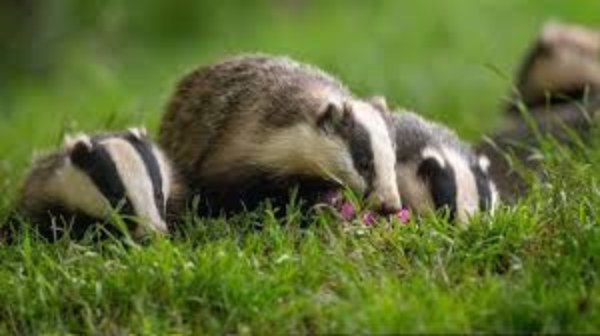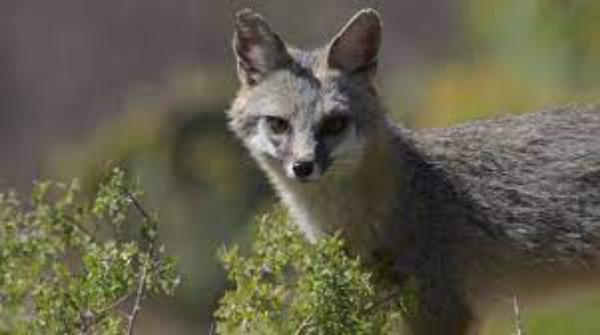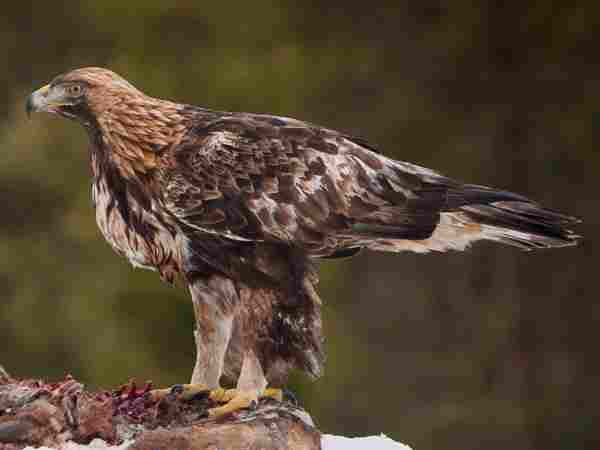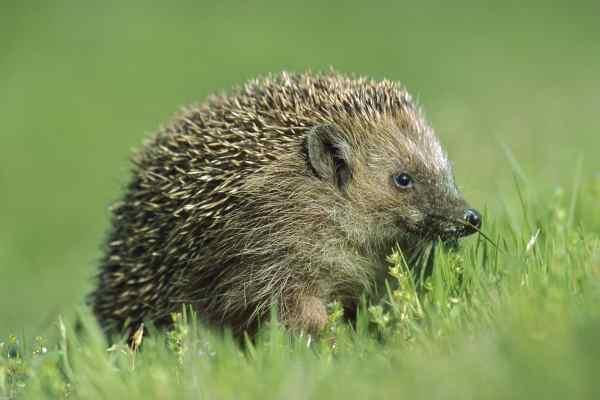In the intricate web of predator-prey relationships, hedgehogs, with their endearing quills and charming demeanor, hold a special place. While they are often perceived as small, well-protected creatures, the animal kingdom boasts a variety of surprising predators that have evolved the ability to overcome the hedgehog’s formidable defenses. This article delves into the fascinating world of “Animals That Eat Hedgehogs,” shedding light on the lesser-known predators that engage in this curious culinary practice.
From large carnivorous mammals to formidable avian hunters, the predators range across different species, showcasing the diverse strategies and adaptations they employ to consume these spiny prey. Exploring this aspect of natural behavior unravels the complexity of predator-prey dynamics, highlighting the diverse and often surprising dietary habits within the animal kingdom. Join us as we unveil the predators that challenge the hedgehog’s defenses and engage in a delicate dance of survival and consumption in the wild.
Table of Contents
Overview of Hedgehogs and Their Unique Characteristics:
Hedgehogs, small insectivorous mammals characterized by their distinctive spines or quills, inhabit parts of Europe, Asia, and Africa. They belong to the family Erinaceidae and are known for their nocturnal habits and remarkable self-defense mechanisms. These spines, which cover their backs and can number up to 7,000, serve as an effective deterrent against potential threats.
When threatened, a hedgehog will typically curl into a tight ball, presenting a formidable barrier of sharp spines. Besides their defense mechanism, hedgehogs possess a keen sense of smell and hearing, aiding them in foraging for a diet primarily consisting of insects, worms, snails, and occasionally fruits.
List Of Animals That Eat Hedgehogs
Badgers (Meles meles):

Badgers, stout and powerful mammals known for their distinctive black and white facial markings, are among the natural predators of hedgehogs. In the wild, these creatures often share habitats with hedgehogs, particularly in woodland areas and grasslands. Badgers, possessing strong digging abilities, can unearth hedgehogs from their hiding spots or overturn them, exposing their vulnerable undersides. When other food sources are scarce, badgers may turn to hedgehogs as a readily available meal.
Despite their often nocturnal hunting habits, badgers are opportunistic feeders, and a hedgehog may fall prey if encountered. However, it’s important to note that hedgehogs have evolved sharp spines as a defense mechanism against such predators. Badgers have a varied diet that includes small mammals, insects, fruits, and more, making hedgehogs a potential item on their menu. To mitigate predation risks, hedgehogs often seek refuge in dens or concealed areas during their active periods.
Foxes (Vulpes vulpes):

Foxes, adaptable and cunning canids, are occasional predators of hedgehogs, especially in areas where their habitats overlap. While hedgehogs are not a primary food source for foxes, they may opportunistically prey on them, particularly if other food options are scarce. Foxes have a diverse diet that includes small mammals, birds, insects, fruits, and more. Hedgehogs may become prey if a fox is in need of sustenance.
However, hedgehogs possess a formidable defense mechanism—sharp spines covering their back and sides. When threatened, hedgehogs curl into a ball, presenting a challenging and prickly target for potential predators like foxes. Foxes’ sharp senses and nocturnal hunting habits enable them to locate hedgehogs in the dark. Despite occasional predation, hedgehogs typically avoid areas frequented by foxes or seek shelter in places that are difficult for foxes to access, minimizing their risk of becoming prey.
Owls (Various species):

Several species of owls, known for their nocturnal hunting prowess and excellent vision, may occasionally prey on hedgehogs, particularly the young or smaller individuals. Owls are opportunistic predators with a diverse diet that includes rodents, insects, small mammals, and birds. In regions where hedgehogs and owls coexist, these raptors may hunt hedgehogs as part of their foraging behavior.
Owls’ sharp talons and powerful beaks allow them to capture and consume hedgehogs when the opportunity arises. However, hedgehogs have a defensive advantage—their sharp spines that deter many predators. When faced with danger, hedgehogs curl into a protective ball, making it difficult for owls to access their vulnerable areas. Despite the potential threat from owls, hedgehogs often utilize their nocturnal habits and spiky defenses to minimize predation risks and survive in their natural habitats.
Large Birds of Prey (e.g., Eagles):

Large birds of prey, such as eagles, with their formidable beaks, sharp talons, and powerful flight, may pose a risk to hedgehogs if they share the same habitat. While hedgehogs are not a primary food source for eagles, instances of predation can occur, especially with smaller or juvenile hedgehogs. Eagles, with their keen eyesight and soaring abilities, can spot hedgehogs from above and target them as potential prey.
Their swift and precise strikes can overcome a hedgehog’s defenses, making them vulnerable. However, hedgehogs have evolved to protect themselves with a spiky armor of sharp quills. When threatened, hedgehogs instinctively curl into a tight ball, presenting a challenging and unappetizing target for birds of prey. This adaptation significantly reduces the risk of predation by large birds and enhances hedgehogs’ chances of survival in the wild.
Dogs (Canis lupus familiaris):

Domestic dogs, although not natural predators of hedgehogs, may inadvertently pose a threat to them, especially in areas where hedgehogs and dogs share the same environment. When encountering a hedgehog, a dog’s curiosity or instinct to chase may lead to accidental harm or predation. Unsupervised dogs may not recognize hedgehogs as non-threatening and might attempt to play with or capture them.
Hedgehogs, with their spiny exterior, may be perceived as a potential target by dogs exhibiting predatory behaviors. Responsible pet ownership, including supervising dogs in areas where hedgehogs are present and maintaining a safe distance, is essential to prevent harm to both the hedgehogs and the dogs. Educating pet owners about the importance of coexisting with wildlife and implementing measures to mitigate potential conflicts is vital for the well-being of all animals involved.
Human-Induced Threats:
While hedgehogs are well-adapted to defend themselves against natural predators, they face a growing number of threats from human activities. Habitat loss due to urbanization and agricultural expansion significantly impacts their populations. Additionally, exposure to pesticides and chemicals used in gardens and farmlands poses severe risks. Furthermore, accidental encounters with humans, habitat fragmentation, and an increase in outdoor pets can lead to unintentional harm to hedgehogs.
Road Accidents:
One of the major threats to hedgehogs is road accidents. Hedgehogs are often victims of collisions with vehicles while foraging for food during the night. Their low mobility, coupled with their nocturnal behavior and a tendency to curl into a ball when threatened, makes them susceptible to fatal encounters with fast-moving vehicles. This issue highlights the need for increased awareness and measures to protect hedgehog populations from vehicular accidents.
Behavioral Defense Mechanisms of Hedgehogs:
Hedgehogs have a set of behavioral defense mechanisms that play a crucial role in their survival. Besides their characteristic spines, they display a defensive posture by rolling into a ball, effectively protecting their vulnerable underside. This behavior is an evolutionary adaptation, deterring potential predators and minimizing their attack surface.
Their keen sense of hearing enables them to detect approaching threats, allowing for timely defensive responses. These combined mechanisms showcase the hedgehog’s ability to navigate and adapt to the challenges of the wild.
Hibernation and Nocturnal Behavior:
Hedgehogs are known for their hibernation habits, a crucial aspect of their survival during harsh winters or food scarcity. As nocturnal creatures, hedgehogs are primarily active during the night, foraging for food and engaging in various social and reproductive behaviors under the cover of darkness.
Their nocturnal behavior helps them avoid diurnal predators and conserve energy during the day, allowing them to efficiently hunt for their preferred insect-based diet when darkness falls. During hibernation, hedgehogs enter a state of reduced metabolic activity, utilizing stored fat reserves to endure the cold months when food is scarce.
Final Words:
Understanding the unique characteristics, behaviors, and challenges faced by hedgehogs is imperative for their conservation and coexistence with human activities. While their spines serve as a defense, they face growing threats from habitat loss, human interactions, and road accidents.
As we appreciate the wonder of hedgehogs and their role in maintaining ecological balance, we must also strive to implement conservation efforts, spread awareness, and create safe environments to ensure the continued survival of these endearing creatures. Balancing human progress with wildlife preservation is key to securing a harmonious future for hedgehogs and the ecosystems they inhabit.
Reference:
- https://homeandroost.co.uk/blog/do-foxes-eat-hedgehogs/
- https://www.wildlifeonline.me
- https://animals.sandiegozoo.org/animals/hedgehog

Zahra Makda
Growing up enjoying the beauty of my village, a good passion for nature developed in me from childhood. Following my passion for the natural world, I have chosen zoology for my graduation, during my undergraduate degree, I participated in many nature trails, bird watching, rescues, training for wildlife conservation, workshop, and seminars on biodiversity. I have a keen interest in invertebrate biology, herpetology, and ornithology. Primary interests include studies on taxonomy, ecology, habitat and behavior.









